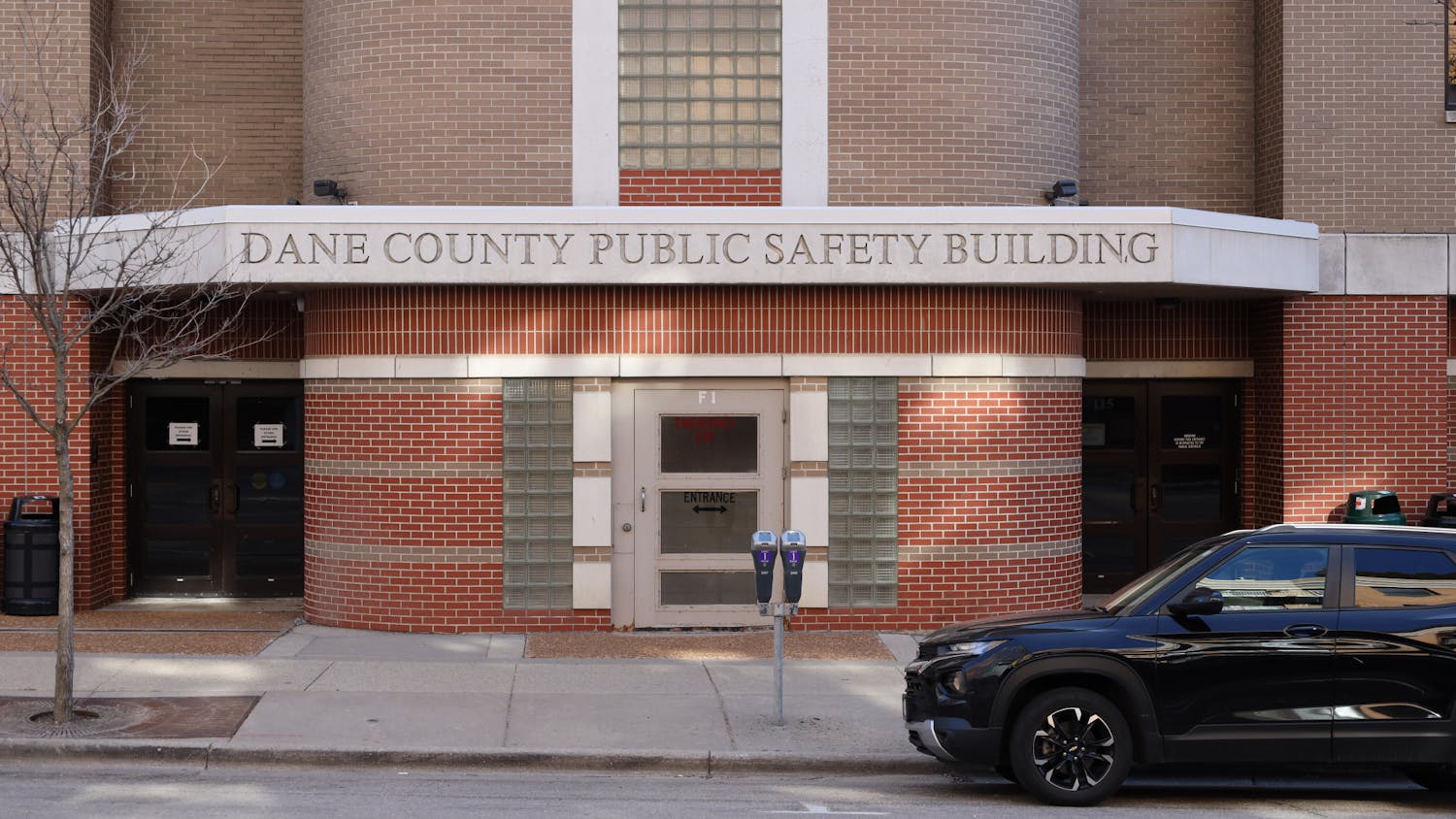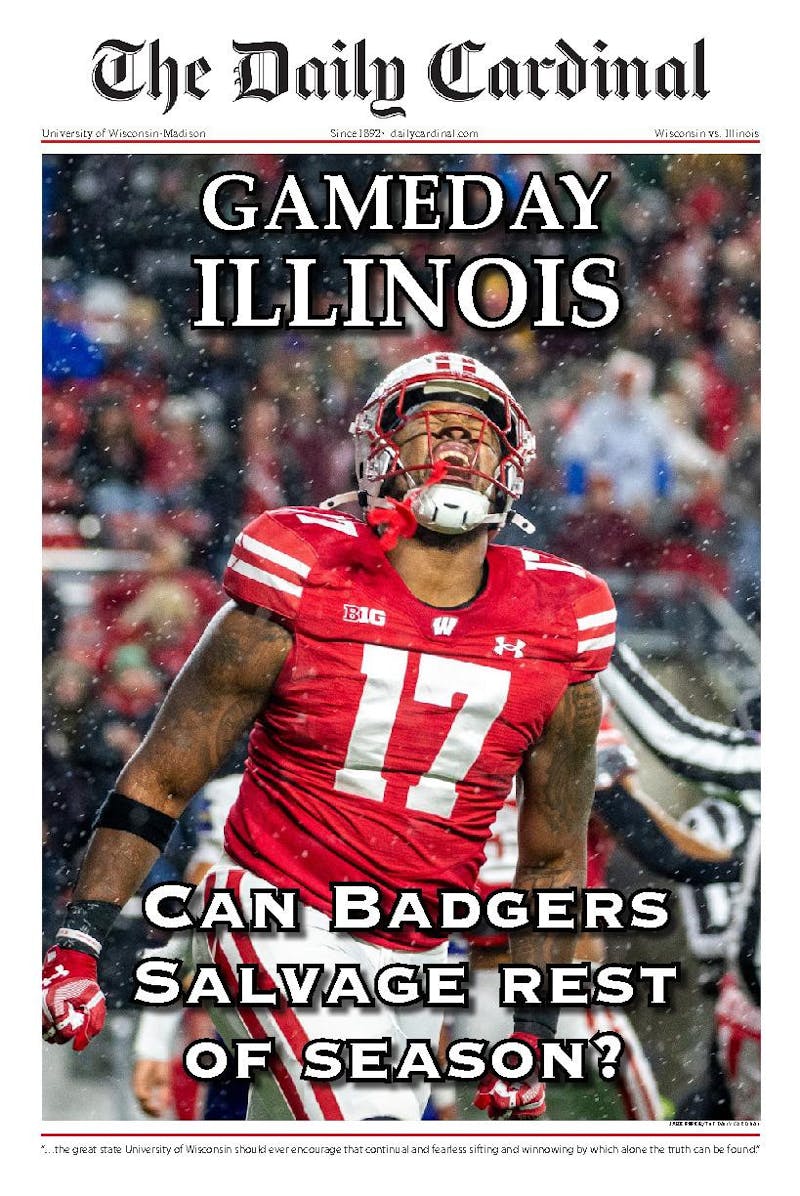Downtown Madison Incorporated (DMI) highlighted the growth of residential buildings and tourism in the city and the rising trend of vacant office buildings in downtown Madison in a panel Thursday morning discussing their 2025 report.
DMI is a membership organization focused on furthering economic development to foster a “healthy, vibrant downtown Madison.” DMI collects and distributes the yearly state of the downtown report providing information concerning trends in downtown Madison for business owners.
Local leaders also discussed housing, homelessness, transportation and the relationship between the city and the University of Wisconsin-Madison.
Housing
President of Urban Land Interests Bob Bruni raised concerns about the record number of luxury construction projects for residential buildings and whether the housing prices are feasible for the downtown market.
“The big question is how deep is the market that is ready and willing and able to pay $4 plus a square foot for residential space,” Bruni said. “So, as costs continue to rise and construction, rental rates continue to push, how deep is the market?”
District 8 Alder MGR Govindarajan added his UW-Madison student constituency is concerned about rising housing prices.
“We need to build more housing and we need to build different types of housing. It’s not just unit housing we need to build,” Govindarajan said. “We need to make sure it’s flexible because what if the university isn’t enrolling 55,000 students next year.”
Homelessness concerns
Govindarajan also said homelessness is at the top of the list of concerns from his constituents.
“I think that impacts everyone, whether you’re a business owner or just a resident or anyone else in the downtown area coming and visiting, is that you're starting to see it a little bit more and more,” he said.
The Madison homeless population has risen in recent years, with a 7% increase since 2024 and a 20% increase since 2020.
Office market trending down
The overall vacancy rate for office space in downtown Madison is 14.9% in 2025, which is a 2.6% point increase from 2024. A rise in remote work is a possible reason for this drop.
However, DMI President Jason Ilstrup said although Madison’s office vacancy rate is increasing, the rate is higher among many peer cities.
Ilstrup said office vacancies are a high priority for DMI.
“We are watching that very closely, because a diverse downtown needs lots of workers, lots of residents from all across the area and tourists," Ilstrup said. “All need to be vibrant to have a successful downtown.”
Tourism rising
Tourism in downtown Madison has skyrocketed in the past year, according to the State of the Downtown report, with a record 9.4 million tourist visits in 2025.
Tourism company Destination Madison has worked closely with DMI to further economic growth in the downtown and greater Madison area. Ilstrup lauded Destination Madison, saying their involvement has been a direct benefit to the economy.
“We set a record last year in 3035 with $327 million economic spend,” Ilstrup said. “That’s about 20% of the entire economic spend of visitors in Dane County.”
Amy Supple, senior vice president and chief operating officer of the Edgewater Hotel, said the leisure tourism industry in Madison is booming with a 4.4% point increase in the past year.
“That’s enormous. It [tourism] is 7.8% higher than it was in 2019,” Supple said.
Transportation frustrations assuaged
City of Madison Director of Transportation Chrsitor Spieler acknowledged the frustrations that downtown residents have dealt with in the past year.
“There are parking garages that are running out of capacity,” Spieler said. “There are some of the slowest places in the city to run our buses, there are huge gaps in the bike network and some bike lanes, I would advise anybody to not ever ride on.”
Spieler also acknowledged the traffic and difficulties that construction on John Nolan Street, the bridge into downtown Madison, has caused.
“I appreciate everyone bearing with us,” Spieler said. “Those [the bridges] have to be replaced, we have no other choice.”
Future UW-Madison plans
Associate Vice Chancellor of Facilities Planning and Management Cindy Torstevit said the top priorities for UW-Madison in the coming years include building more student housing and knocking down the Mosse Humanities building.
“I think one of our biggest, most top priorities is the Humanities building,” Torstevit said. “Our biggest priority right now is getting out of that building, relocating music and art out and demoing that building so we can unlock that parcel.”
Torsetvit said the university is working with the city to solve this problem, and while they “haven’t solved it yet,” she is optimistic about “solving it together.”
“Housing is a big priority for us as we think about our infrastructure,” Torstevit said. “We are at about 115% occupancy in our residence halls.”
Student priorities
Aside from housing, Govindarajan detailed priority policy initiatives for the student body.
Lighting is at the top of Govindarajan’s priority list due to its feasibility.
“I think lighting is the number one thing that we can do right away because that’s probably the easiest thing to do,” Govindarajan said. “Make sure that our streets are well lit and also avoid light pollution a little bit here and there as well.”
Govindarajan said State Street restaurants and entertainment places staying open later is important to the student body as well. Diverse modes of transportation being readily available late into the night was another priority.
Uneven playing field for Madisonians
Amy Supple said Madison needs to seek out receiving more state funding to achieve future goals. She said the city isn’t on an “even playing field.”
“But in reality, I’ve not talked to one person after they understand the state funding formula that says Madison has a fair shake,” Supple said.
Local governments received an 8.2% raise in revenues from property taxes and state-sponsored aid in 2024, while Madison didn’t have a raise. Madison’s funding amounted to $28 per capita, hurting economic initiatives for the city.






